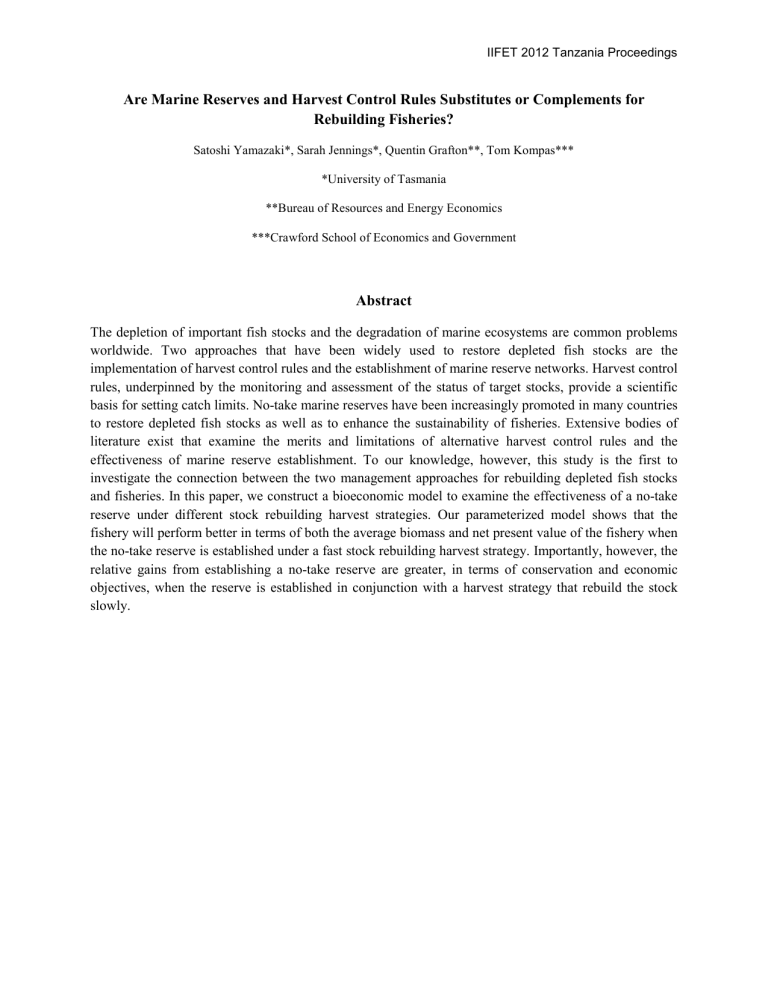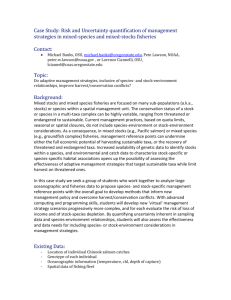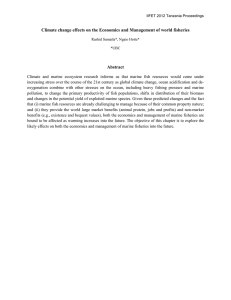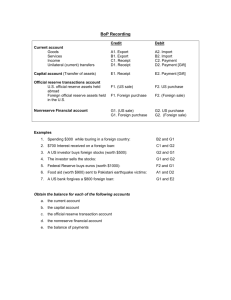Are Marine Reserves and Harvest Control Rules Substitutes or Complements... Rebuilding Fisheries?

IIFET 2012 Tanzania Proceedings
Are Marine Reserves and Harvest Control Rules Substitutes or Complements for
Rebuilding Fisheries?
Satoshi Yamazaki*, Sarah Jennings*, Quentin Grafton**, Tom Kompas***
*University of Tasmania
**Bureau of Resources and Energy Economics
***Crawford School of Economics and Government
Abstract
The depletion of important fish stocks and the degradation of marine ecosystems are common problems worldwide. Two approaches that have been widely used to restore depleted fish stocks are the implementation of harvest control rules and the establishment of marine reserve networks. Harvest control rules, underpinned by the monitoring and assessment of the status of target stocks, provide a scientific basis for setting catch limits. No-take marine reserves have been increasingly promoted in many countries to restore depleted fish stocks as well as to enhance the sustainability of fisheries. Extensive bodies of literature exist that examine the merits and limitations of alternative harvest control rules and the effectiveness of marine reserve establishment. To our knowledge, however, this study is the first to investigate the connection between the two management approaches for rebuilding depleted fish stocks and fisheries. In this paper, we construct a bioeconomic model to examine the effectiveness of a no-take reserve under different stock rebuilding harvest strategies. Our parameterized model shows that the fishery will perform better in terms of both the average biomass and net present value of the fishery when the no-take reserve is established under a fast stock rebuilding harvest strategy. Importantly, however, the relative gains from establishing a no-take reserve are greater, in terms of conservation and economic objectives, when the reserve is established in conjunction with a harvest strategy that rebuild the stock slowly.






